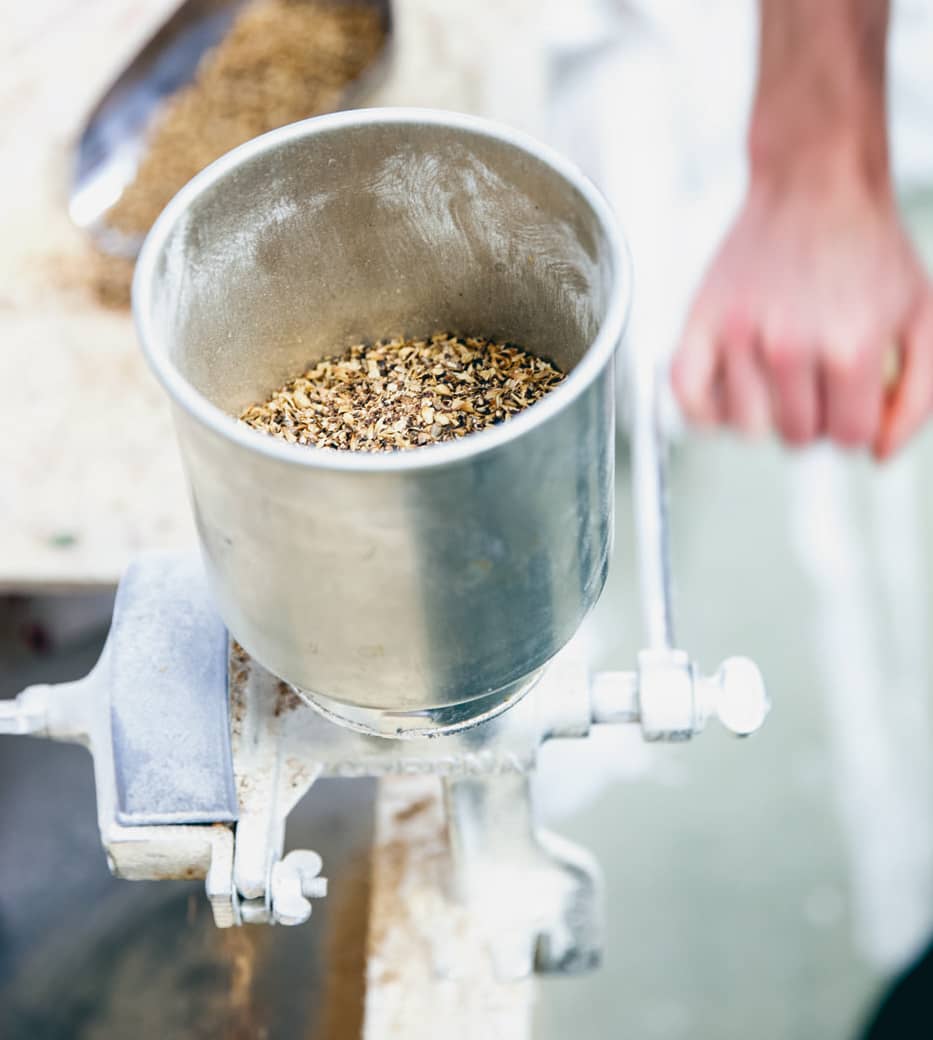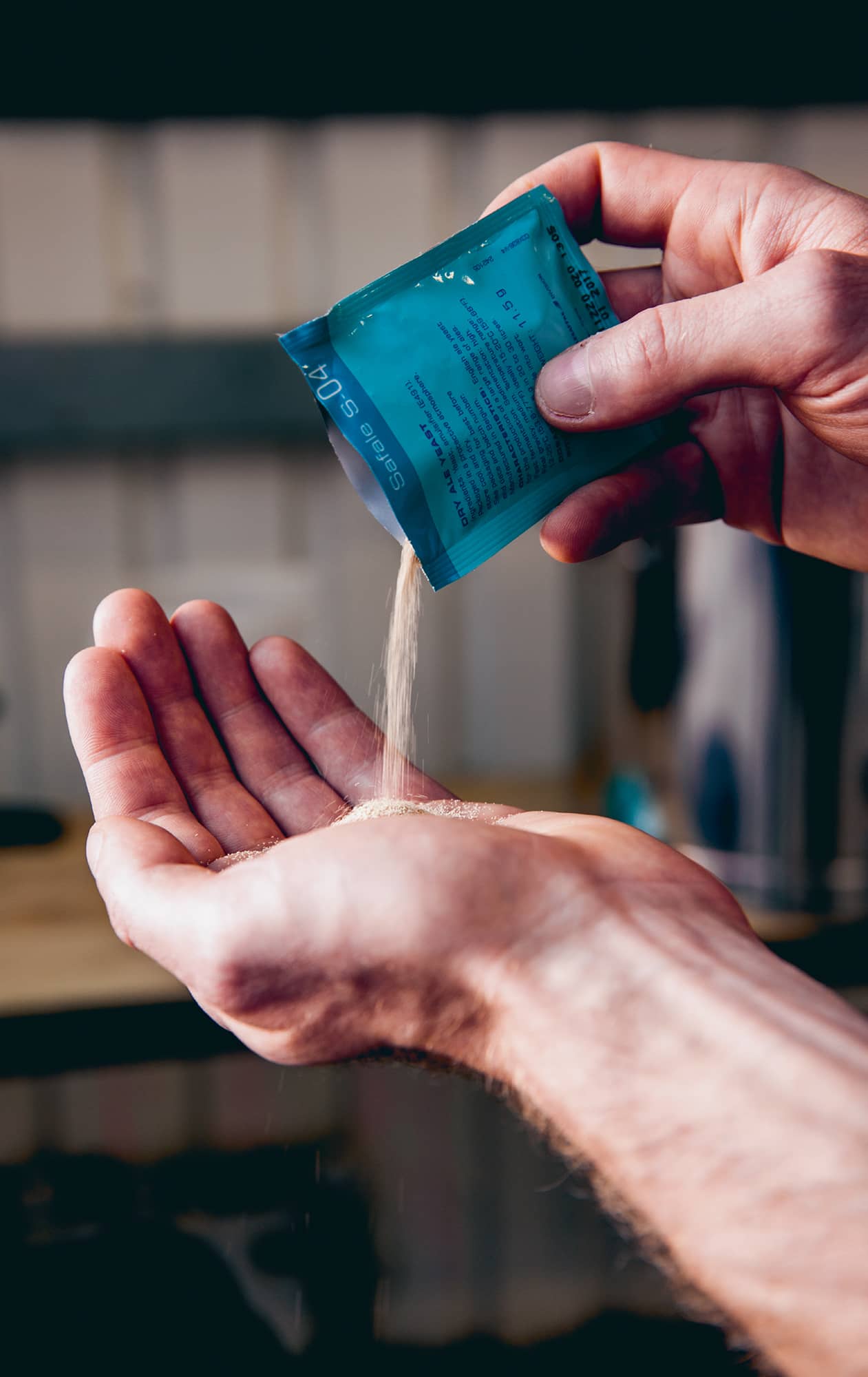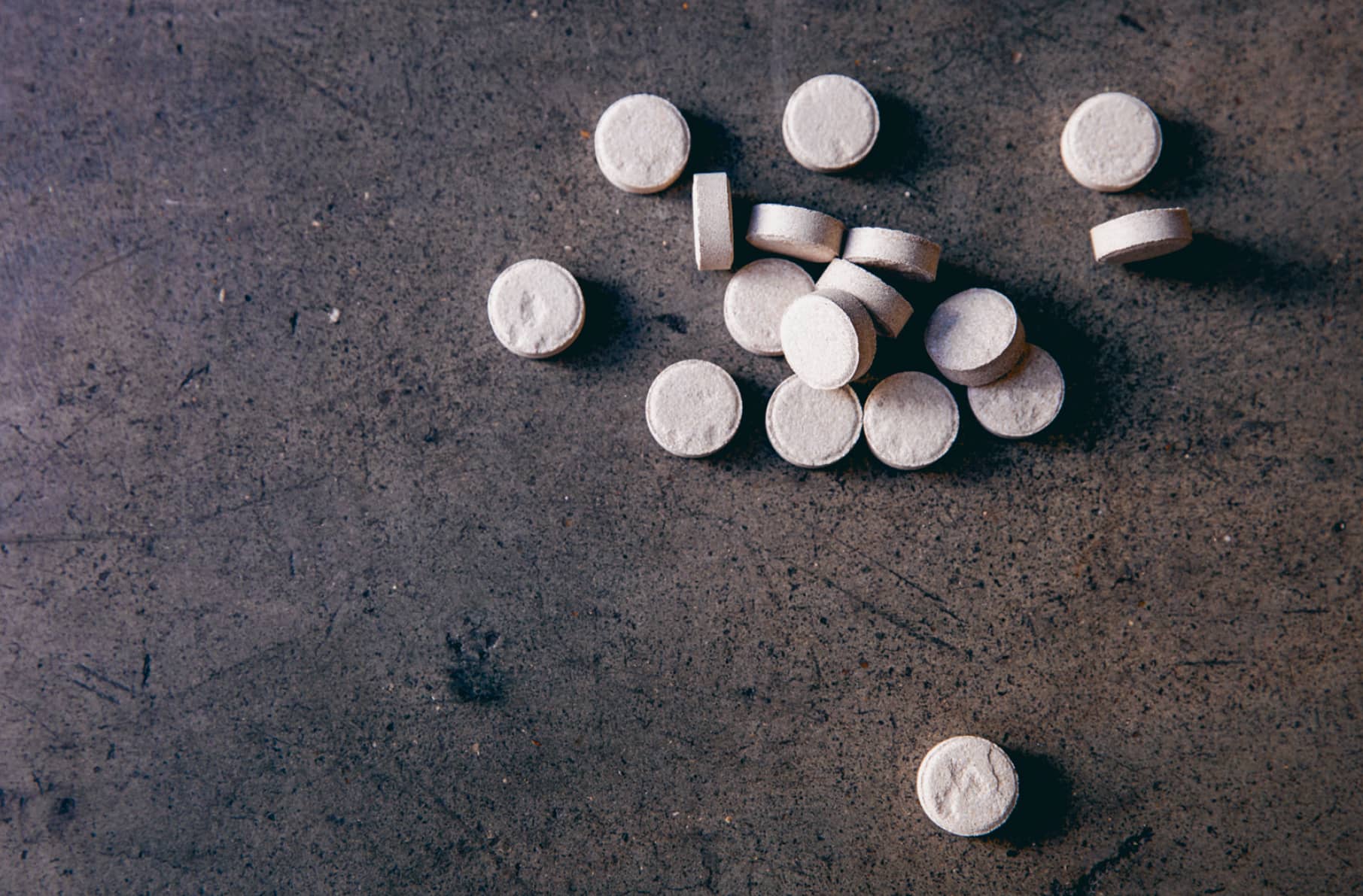Ingredients

Just as you really don’t need much equipment to make beer, its ingredients can be reduced to a core four: water, malt, hops and yeast. From this holy quaternity, miracles happen – every element comes in many variations, but together they form the basis of most beers.

01 Water
It might seem like the most straightforward ingredient, but even plain old H2O needs a bit of consideration before it goes into a brew. It makes up the largest percentage of beer. Traditionally, the mineral content and pH of local water determined the types of beer that would be made in an area (London’s high-carbonate water meant stouts and porters dominated, whereas the soft water in parts of Germany make an ideal base for lager). There are solutions and tablets you can add to brewing water to raise or lower the pH or hardness, but it might feel like it takes a chemistry degree to fully understand the effects of various chemicals and minerals on your ingredients. Unless your own area’s water has a notably extreme chemical make-up, or you really want to recreate a particular style of beer exactly, the stuff that comes out your tap will probably be fine for your first few brews. Your water company will be able to supply a report on the compounds present in your supply if you want to get scientific, and then you can begin to tailor the water chemistry for each brew.

02 Malt

The first thing you’ll probably add to brewing water is malt and other grains (collectively known as grist). Malt is a catch-all term for any type of ‘malted’ cereal – a grain that has gone through the process of being soaked in water to begin germination then dried in hot air to stop it. The drying is done to different degrees of intensity (heavy roasting, even). Germination allows the natural starches to be converted into sugar during the beermaking process.
Pretty much any cereal can be malted and used in beer – millet, buckwheat, spelt even – but the most-used varieties are barley, wheat, oats and rye. The intensity of the post-soak heating results in different characters – pale malt, for instance, is used as a base for many beers and doesn’t add much colour; ‘chocolate’ malt lends deep, bitter flavours and a rich dark hue. (Roasted barley isn’t malt, but is often employed in the same way, in stouts and porters.)
Malts are classified by colour in three scales – degrees Lovibond (from light 10L to 300L-plus dark malts), and the newer ERM (European Reference Method) and EBC (European Brewery Convention).
Grains need to be crushed (into about three smaller bits) before use. Brewers working towards a homemade product take on the crushing themselves using a grinder, but if you buy malt pre-crushed, try to use it straight away. It will last well in its whole form but loses potency when broken up.
Enzymes produced during germination break down long and complex grain starches into shorter lengths which can be consumed by yeast – lower temperature mashes favouring beta amylase will in general create higher alcohol but less body in the beer; mash temperatures towards the higher end of the scale favour alpha amylase, which leads to lower alcohol production and more body. A balance between both is usually favoured.

03 Hops
In a beautiful balancing act with malt, hops are the other primary flavour-creators in beer. Brewers use the (usually) dried flowers of the hop plant, which also have medicinal and antibacterial properties (before the days of scrupulous sanitation, hops had a welcome side effect of killing bacteria). They can also add a barrel-load of taste, ranging from subtle and warm to unrestrainedly floral or totally tropical, depending on the variety. Hops added at the start of the boil provide bitterness; when added throughout the process (‘late hopping’) they provide more powerful flavours, and at the end they create aroma in beer. Those American-style IPAs that seem to fill the room with their ultra-fresh fruit and garden bouquet – you can guarantee a whole heap of late hops have been employed. Some hops are best for bittering, some excel at aroma, and the all-rounders do both. Hop packets list an alpha acid percentage (AA), which varies by crop and year, and to ensure consistency, brewers have to take this into account. It gives us an idea of the amount of bitterness a hop will provide. For example, the US Chinook has a relatively high AA at around 12%, whereas New Zealand’s Wai-Iti brings only around 4% AA but smells like a citrus orchard in summer. Some recipes in this book list the brewers’ recommended AA – if you’re aiming for accuracy, you need to take this into account.


04 Yeast

Yeast is the final component in the alchemical series of reactions that end up as beer. When added to cooled wort after the hop boil, yeast sets about vigorously gobbling up the sugars in the liquid, turning them into alcohol and CO2. Without yeast, beer would be a flat, dead and impotent liquid and the world would be a sad place. Most homebrew yeasts are of the Saccharomyces genus, although others exist, including the harder-to-handle Brettanomyces (see here for example). Saccharomyces comes in top-fermenting and bottom-fermenting varieties – top is more common and used for most ales; bottom needs lower temperatures to get to work and is used mainly for lagers and pilsners.
There are many varieties of commercially grown yeast, some of which add unique flavours and cope differently with the traits of the beer being brewed. Saison yeast, for instance, will introduce spicy and aromatic notes. Some yeasts are described as ‘clean fermenting’: they don’t impart much personality but convert efficiently and quietly. Breweries often use house strains that they ‘harvest’ from finished brews to use in the next: this can be done at home, which is a slightly more advanced technique but ensures you have a regular supply of healthy and strong yeast.
You can buy yeast dry (to ‘pitch’ or add into the wort from a packet) or liquid (which may have to be fermented separately in a ‘starter’ along with dried malt extract and water, or wort, before pitching. Dry is convenient, easier to use and recommended for beginners, but comes in a limited range of strains. Wyeast sells ‘Smack Packs’, slap-activated bags of liquid yeast plus nutrients which make starters on their own; White Labs sells vials of liquid yeast that are shaken to the same aim.
Each variety of yeast has its own characteristic measurements: attenuation, which is the amount of sugar that it will convert to alcohol and carbon dioxide; flocculation, the amount it will ‘clump’ together into solids during the latter stages of fermentation; the optimum temperature range it prefers; and its alcohol tolerance – the level of booze it handle before it gives up. We all have that.
05 Other ingredients
‘Adjuncts’ refers mainly to unmalted grains added to a mash – corn, oats, rice – which don’t take part in sugar creation but have other desirable properties: they might improve foam retention, say, or provide mouthfeel. The term can also refer to sugars – the likes of corn sugar or Belgian candi sugar – added at different stages of the brew to increase fermentation or alcohol content.
Sugar is also added to ‘prime’ beer just before bottling or kegging – this creates carbonation in the finished product. Light, refreshing styles – lager, amber, wheat, for instance – need more sugar than rich, comforting styles like porter or bitter.
And beer can be best pals with a huge range of other ingredients. Espresso stout, raspberry wheat beer, lemongrass saison, citrus IPA, salted porter… Those are a few uncontroversial combinations. But what about Rogue’s Voodoo Doughnut, made with bacon and maple syrup? Or Two Birds’ Taco Beer, a fiesta of corn, coriander and lime? Or the Popcorn Pilsner made by Indiana’s Sun King brewery? There are no rules beyond what’s actually drinkable – and homebrewing gives you the chance to raid the store cupboard and get creative.

Finally, many beers benefit from clarifying agents (finings). In some styles, clear beers are prized by the brewer for both visual and taste reasons, but three things can cause cloudiness: proteins (from darker grains, malted and unmalted); tannins (a grain by-product of the mash); and suspended yeast. A traditional type of clarifying agent is Irish moss (actually seaweed), added at the boil stage; it encourages the flocculation (or ‘clumping’) of proteins, which sink to the bottom to form sediment. Protofloc and Whirlfloc are tablet versions of finings.